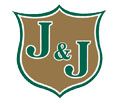Ants might be tiny, but their presence can have a big impact on the environment, ecosystems, and even our homes. Lake Charles, situated in southwestern Louisiana, is home to a fascinating variety of ant species, thanks to its warm, humid climate and diverse habitats. Whether you’re a homeowner worried about invasive ants or a biology enthusiast curious about the local fauna, understanding the ant species in this area is essential.
This blog will explore the common ant species found in Lake Charles, their behavior, ecological importance, and how to manage them if they become a nuisance.
The Rich Diversity of Ants in Lake Charles
Lake Charles offers an ideal environment for ants to thrive. The region’s mild winters and long, hot summers provide ants with a favorable climate to establish colonies and expand their populations. With a variety of habitats ranging from dense woodlands to urban areas and wetlands, Lake Charles is home to several ant species, including native and invasive types.
Native Ant Species
Native ants are crucial to the ecosystems in which they inhabit. They help in processes such as aerating the soil, controlling pest populations, and dispersing seeds. Some of the native ant species in Lake Charles include:
1. Harvester Ants (Pogonomyrmex spp.)
Harvester ants are known for their seed-collecting habits, which contribute to seed dispersal and plant propagation in the local environment. These reddish-brown ants are typically found in sandy soils and open areas. While mostly harmless, their sting can be painful, so avoid disturbing their nests.
2. Pavement Ants (Tetramorium immigrans)
Pavement ants are frequently found nesting in cracks in sidewalks, driveways, and near building foundations. They are relatively small and dark brown or black in color. Although they are not aggressive, they are known to invade homes in search of food.
3. Acrobat Ants (Crematogaster spp.)
Recognizable by their heart-shaped abdomens, acrobat ants are arboreal, which means they often nest in trees or decayed wood. These ants feed on sugars and insects, playing a role in controlling smaller insect populations in their habitat.
The Problem with Invasive Ant Species
While native ant species often coexist peacefully with their environment, invasive ants can disrupt ecosystems by outcompeting native species for resources, damaging crops, and aggressively expanding their territories. Unfortunately, Lake Charles is not immune to the spread of invasive ants.
1. Red Imported Fire Ants (Solenopsis invicta)
One of the most infamous invasive ant species in Lake Charles is the red imported fire ant. Known for their aggressive nature and painful sting, these ants are a widespread problem throughout the southeastern United States. Fire ants build large mounds and can quickly overrun an area, causing challenges for homeowners, farmers, and local wildlife.
2. Argentine Ants (Linepithema humile)
Argentine ants are another invasive species commonly found in urban areas and gardens. These ants form supercolonies, consisting of thousands of workers, and are highly adaptable to different environments. Their ability to reproduce rapidly and outcompete other ants makes them a major concern for Lake Charles residents.
3. Tawny Crazy Ants (Nylanderia fulva)
A relatively new invasive species, tawny crazy ants (also known as Rasberry crazy ants) are rapidly spreading in the southern United States, including Louisiana. They get their name from their erratic movement patterns. Tawny crazy ants are particularly problematic because they do not respond well to traditional ant control methods and have been known to infest electrical equipment, causing costly damage.
Protecting Your Home from Nuisance Ants
While ants have their place in the ecosystem, they can quickly turn into pests when they invade our personal spaces. Here are some tips for managing ant issues in your home or yard:
1. Prevent Entry
Seal cracks and crevices around doors, windows, and foundations to block ants from entering your home. Installing weather stripping and repairing damaged screens can also help keep ants out.
2. Eliminate Attractants
Ants are drawn to food and water sources. Keep your kitchen clean by wiping down counters, sealing food in airtight containers, and immediately cleaning up spills. Don’t forget to empty trash cans regularly. Outside, trim vegetation and clean up fallen fruit that may attract ants.
3. Manage Outdoor Nests
If you spot ant mounds on your property, avoid disturbing them directly, as species like fire ants can become aggressive. Instead, consider using ant bait nearby, which workers will carry back to their colonies.
4. Use Professional Help
If an infestation is severe or involves invasive species, consult a pest control professional who is experienced in managing ants in Lake Charles. They can recommend targeted treatments that minimize risks to non-target organisms and the environment.
Tags: Ant Control Lake Charles, Ant Exterminator, Lake Charles Ant Control, Lake Charles Ant Exterminator



